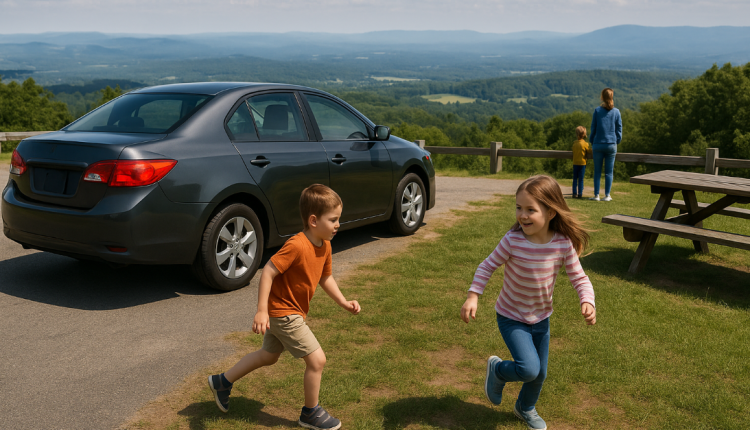Embracing the Journey Together
Embarking on a road trip with children transforms travel into an enriching family experience. Unlike other forms of transportation, road trips offer the flexibility to explore at your own pace, discover hidden gems, and create lasting memories. However, traveling with kids requires thoughtful planning to ensure a smooth and enjoyable journey for everyone involved.
Planning Ahead: The Foundation of a Successful Trip
Effective planning is crucial when traveling with children. Begin by selecting a route that includes kid-friendly attractions and rest stops. Involve your children in the planning process by allowing them to choose some destinations or activities, fostering excitement and engagement. Ensure your vehicle is in top condition with a thorough maintenance check, including tire pressure, oil levels, and brake functionality. Pack essential documents, a first-aid kit, and emergency supplies to prepare for unforeseen circumstances.
Packing Smart: Balancing Necessities and Comfort
When packing for a family road trip, aim for a balance between essentials and comfort items. Bring sufficient clothing for various weather conditions, personal hygiene products, and medications. Include favorite toys, books, and comfort items like blankets or stuffed animals to provide a sense of familiarity. Organize items using labeled containers or bags to facilitate easy access and maintain order within the vehicle.
Entertainment on the Go: Keeping Young Minds Engaged
Long drives can challenge children’s patience, making entertainment a vital component of the journey. Prepare a mix of activities such as audiobooks, music playlists, travel games, and educational apps. Encourage creativity with drawing supplies or storytelling sessions. Incorporate interactive games like “I Spy” or license plate bingo to make the ride more engaging. Limiting screen time and promoting interactive activities can enhance family bonding and reduce restlessness.
Nutrition and Hydration: Fueling the Adventure
Maintaining energy levels is essential for a pleasant trip. Pack a variety of healthy snacks, including fruits, nuts, and whole-grain options, to keep hunger at bay. Ensure an adequate supply of water to stay hydrated, especially during warmer weather. Plan meal stops at family-friendly restaurants or picnic areas to provide balanced meals and a break from the vehicle.
Rest Stops and Breaks: Prioritizing Well-being
Regular breaks are crucial to prevent fatigue and discomfort. Schedule stops every two to three hours to allow children to stretch, use restroom facilities, and expend energy. Identify rest areas with playgrounds or open spaces where kids can play safely. These intervals not only promote physical well-being but also contribute to a more relaxed and enjoyable journey.
Safety Measures: Ensuring a Secure Environment
Safety is paramount when traveling with children. Use age-appropriate car seats or booster seats, and ensure they are correctly installed. Keep doors locked and child safety locks engaged. Educate children on the importance of staying seated and wearing seatbelts at all times. Store hazardous items, such as cleaning supplies or sharp objects, out of reach. Familiarize yourself with emergency procedures and have a list of emergency contacts readily available.
Accommodation Choices: Comfort Away from Home
Selecting suitable accommodations can significantly impact the overall experience. Opt for family-friendly hotels or motels that offer amenities like swimming pools, playgrounds, or complimentary breakfasts. Consider booking accommodations in advance to secure the best options and avoid last-minute stress. If camping, choose sites with clean facilities and safe environments. Ensuring a comfortable and secure place to rest each night contributes to a successful trip.
Flexibility and Patience: Embracing the Unexpected
Despite meticulous planning, unexpected situations may arise. Traffic delays, weather changes, or unforeseen detours can disrupt schedules. Maintaining a flexible attitude and demonstrating patience sets a positive example for children and helps manage stress. Use these moments as opportunities to explore new places or engage in spontaneous activities, turning potential setbacks into memorable experiences.
Educational Opportunities: Learning Beyond the Classroom
Road trips offer unique educational experiences. Visit museums, historical sites, or natural landmarks to provide hands-on learning opportunities. Encourage children to keep travel journals, documenting their observations and experiences. Discuss geographical features, cultural differences, or historical events related to the places you visit. These activities enrich the journey and foster a love for learning.
Conclusion: Creating Lasting Memories
A well-planned road trip with children can be a rewarding adventure that strengthens family bonds and creates cherished memories. By prioritizing preparation, safety, and engagement, families can navigate the open road with confidence and joy. Embrace the journey, savor the moments, and enjoy the shared experiences that make family travel truly special.


